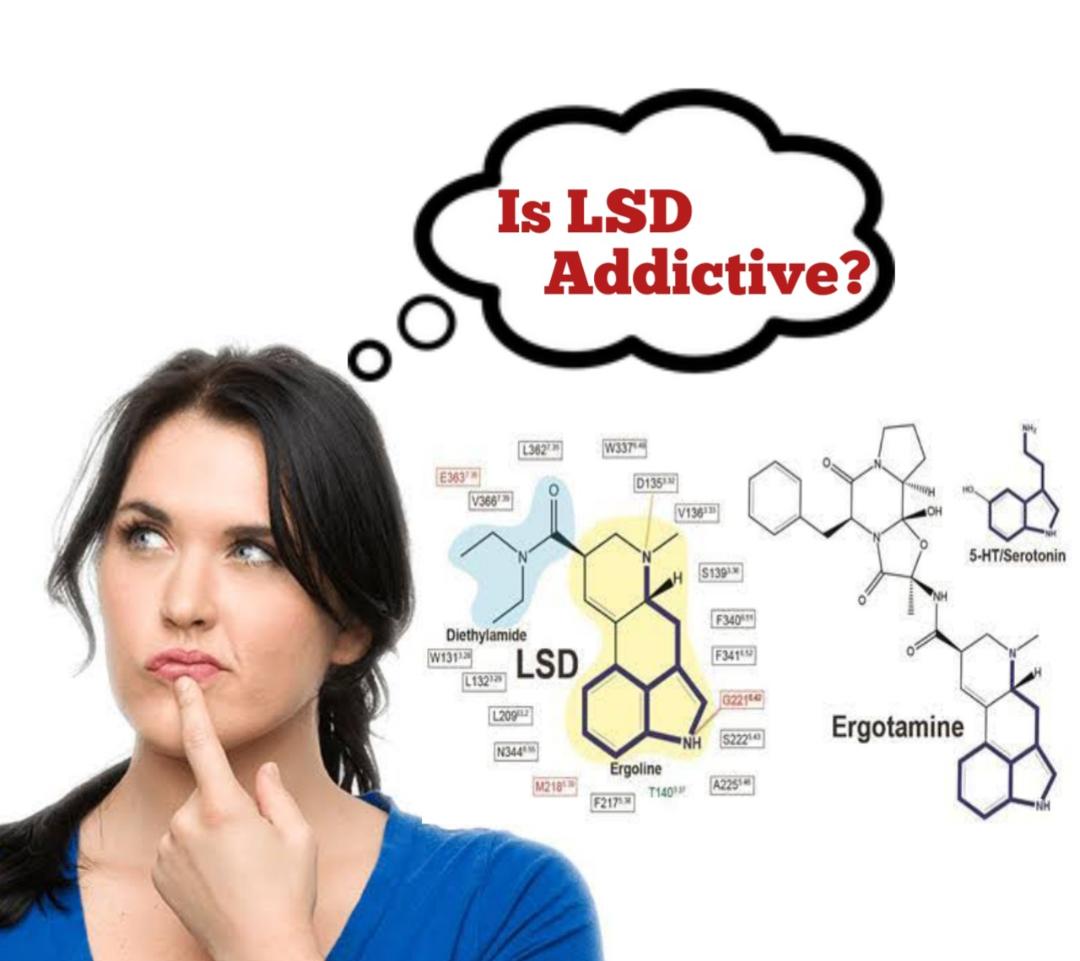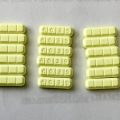
LSD (Lysergic acid diethylamide) is a synthetic chemical, made from a substance found in ergot, which is a fungus that infects rye (grain). LSD belongs to a group of drugs known as psychedelics. When small doses are taken, it can produce mild changes in perception, mood, and thought. When larger doses are taken, it may produce visual hallucinations and distortions of space and time.
Sometimes, what is sold as LSD can actually be other chemicals such as NBOMe or the 2C family of drugs (part of the new psychoactive substances). These can be quite dangerous, as their quality is inconsistent, plus the potential to take too much of these other substances can be fatal and a number of deaths have been reported due to people taking them.
What does LSD look like?
In its pure state, LSD is a white odourless crystalline substance. However, LSD is so potent that an effective dose of a pure drug is so small it is virtually invisible. As a result, it is usually diluted with other materials. The most common form of LSD is drops of LSD solution dried onto gelatin sheets, pieces of blotting paper, or sugar cubes, which release the drug when they are swallowed. LSD is also sometimes sold as a liquid, in a tablet, or in capsules.
LSD is often sold on the street in small tablets (“microdots”), capsules, or gelatin squares (“window panes”). It is sometimes added to absorbent paper, which is then divided into small squares decorated with designs or cartoon characters (“loony toons”). Occasionally it is sold in liquid form. But no matter what form it comes in, LSD leads the user to the same place—a serious disconnection from reality.
The effects of LSD are unpredictable and depend on the amount taken; the person’s personality, mood, and expectations; and the situation in which the drug is used. Effects are usually felt within 30 to 40 minutes after taking the drug. The LSD experience is often called a “trip” and can last up to 12 hours.
LSD causes:
- Dilated pupils, increased body temperature, increased heart rate and blood pressure, sweating, loss of appetite, sleeplessness, and dry mouth.
- Changes in sensations and feelings. The person may feel several different emotions at the same time or rapidly swing from one emotion to another. Also, the person may confuse sensations and feelings, such as “hearing” colors or “seeing” sounds.
- Loss of time. The person may feel that time is standing still.
- Delusions and visual hallucinations, if taken in large doses. Delusions are false beliefs, and hallucinations are seeing and hearing things that are not present.
A “bad trip” may contain terrifying thoughts, feelings, and fears. Also, LSD can cause flashbacks, in which the person suddenly relives certain aspects of the experience without having taken the drug. Flashbacks may occur a few days or more than a year after the use of LSD.
Is LSD Addictive?
The Drug Enforcement Agency (DEA) classified LSD as a Schedule 1 drug, meaning LSD has a high potential for abuse, has no currently accepted medical treatments, and has a lack of accepted safety for use under medical supervision. LSD users can become psychologically addicted to the drug’s hallucinogenic effects and suffer numerous consequences because of it.
However, despite being an illegal Schedule 1 substance, there has been a resurgence of interest in potential therapeutic uses for LSD, such as for the treatment of alcoholism and depression. In 2016, The Beckley/Imperial Research Programme published the world’s first images of the human brain on LSD, revealing some of the key mechanisms behind its profound consciousness-altering effects. Collaborating with world-class researchers and universities, the Beckley Foundation has also produced studies into the effects of LSD on anxiety, synesthesia, ego dissolution, vision, and music perception, and will now look at the effects of the compound on mood (including depression, anxiety, and vitality), cognitive functions, creativity, and general wellbeing. READ: Does LSD (Acid) Show Up On A Drug Test
Risk Factors For LSD Use and Addiction
People of any age, sex, or economic status can become addicted to LSD. Certain factors can affect the likelihood and speed of developing an LSD addiction they include:
- Family history of addiction. Drug addiction is more common in some families and likely involves genetic predisposition. If you have a blood relative, such as a parent or sibling, with alcohol or drug addiction, you’re at greater risk of developing an LSD
- Mental health disorder. If you have a mental health disorder such as depression, attention-deficit/hyperactivity disorder (ADHD), or post-traumatic stress disorder, you’re more likely to become addicted to LSD. Using drugs can become a way of coping with painful feelings, such as anxiety, depression, and loneliness, and can make these problems even worse.
- Peer pressure. Peer pressure is a strong factor in starting to use and misuse drugs, particularly for young people.
- Lack of family involvement. Difficult family situations or lack of a bond with your parents or siblings may increase the risk of an LSD addiction, as can a lack of parental supervision.
- Early use. Using drugs at an early age can cause changes in the developing brain and increase the likelihood of an LSD
- Taking a highly addictive drug. Some drugs, such as LSD, cocaine, or opioid painkillers, may result in faster development of addiction than other drugs. Smoking or injecting drugs can increase the potential for addiction.
Predicting what kind of experience a person will have after taking LSD can’t be guaranteed, so experts recommend that people with a personal or family history of mental illness should be aware of their vulnerability to potential latent psychological issues emerging or being triggered.
Treatment begins with recognizing there is a problem. Once you decide you want to do something about your LSD use, the next step is getting help and support.
Treatment programs use behavior change techniques through counseling (talk therapy). The goal is to help you understand your behaviors and why you use LSD. Involving family and friends during counseling can help support you and keep you from going back to using (relapsing).
Because LSD use may cause mental problems, medicines may be also prescribed to help treat symptoms of anxiety, depression, or schizophrenia. ALSO READ What is 1P-LSD : Health Risks, Side Effects, Legality




